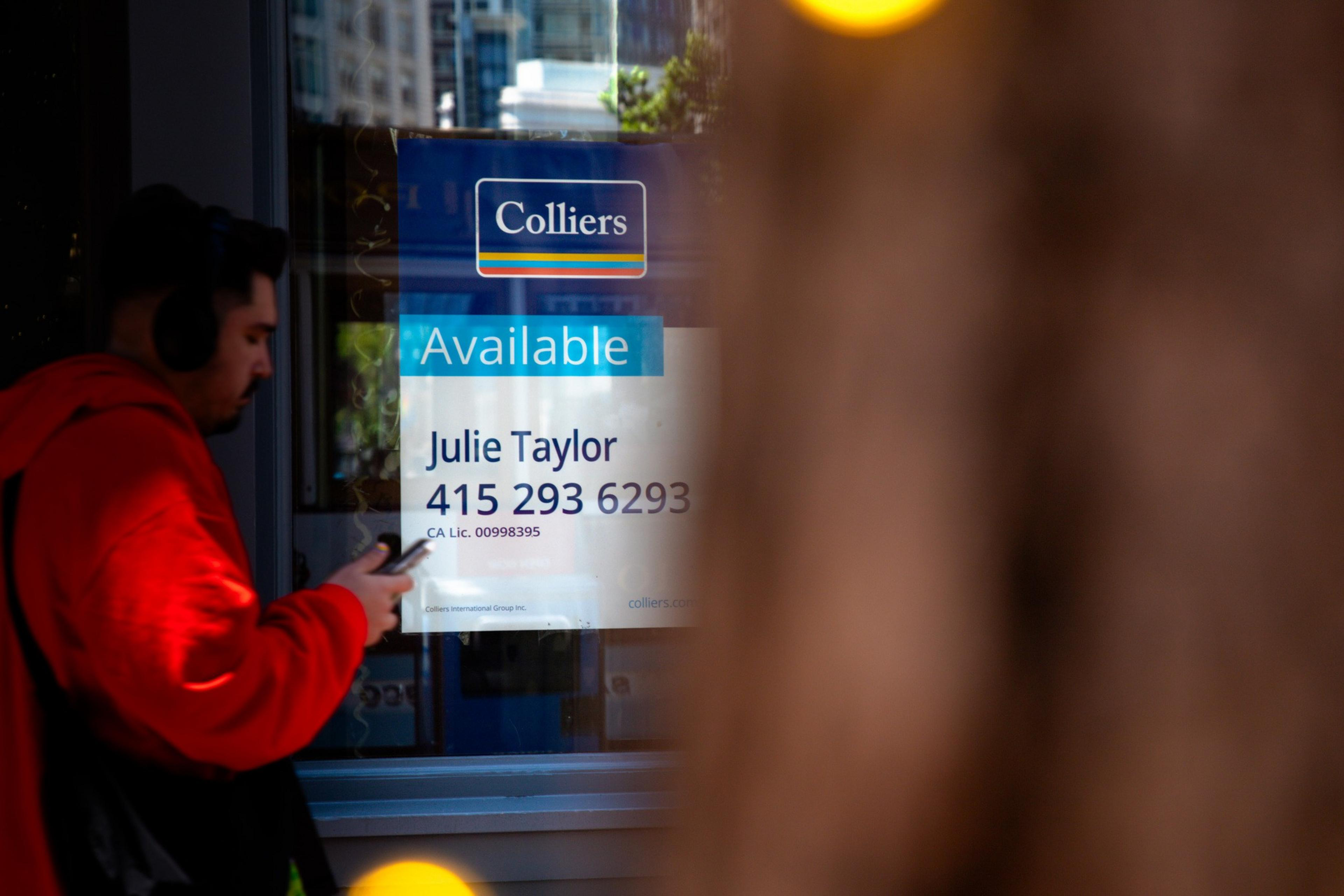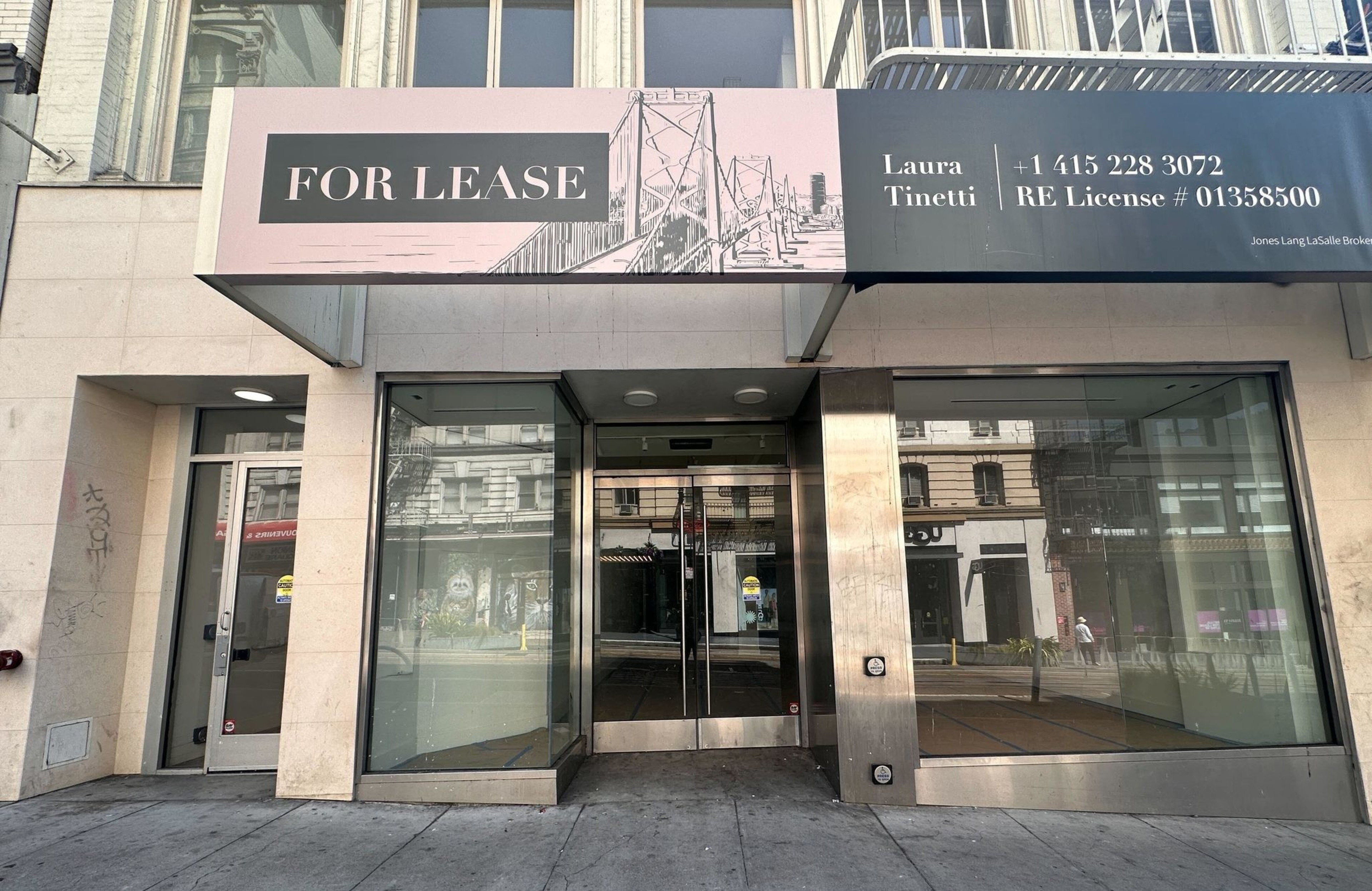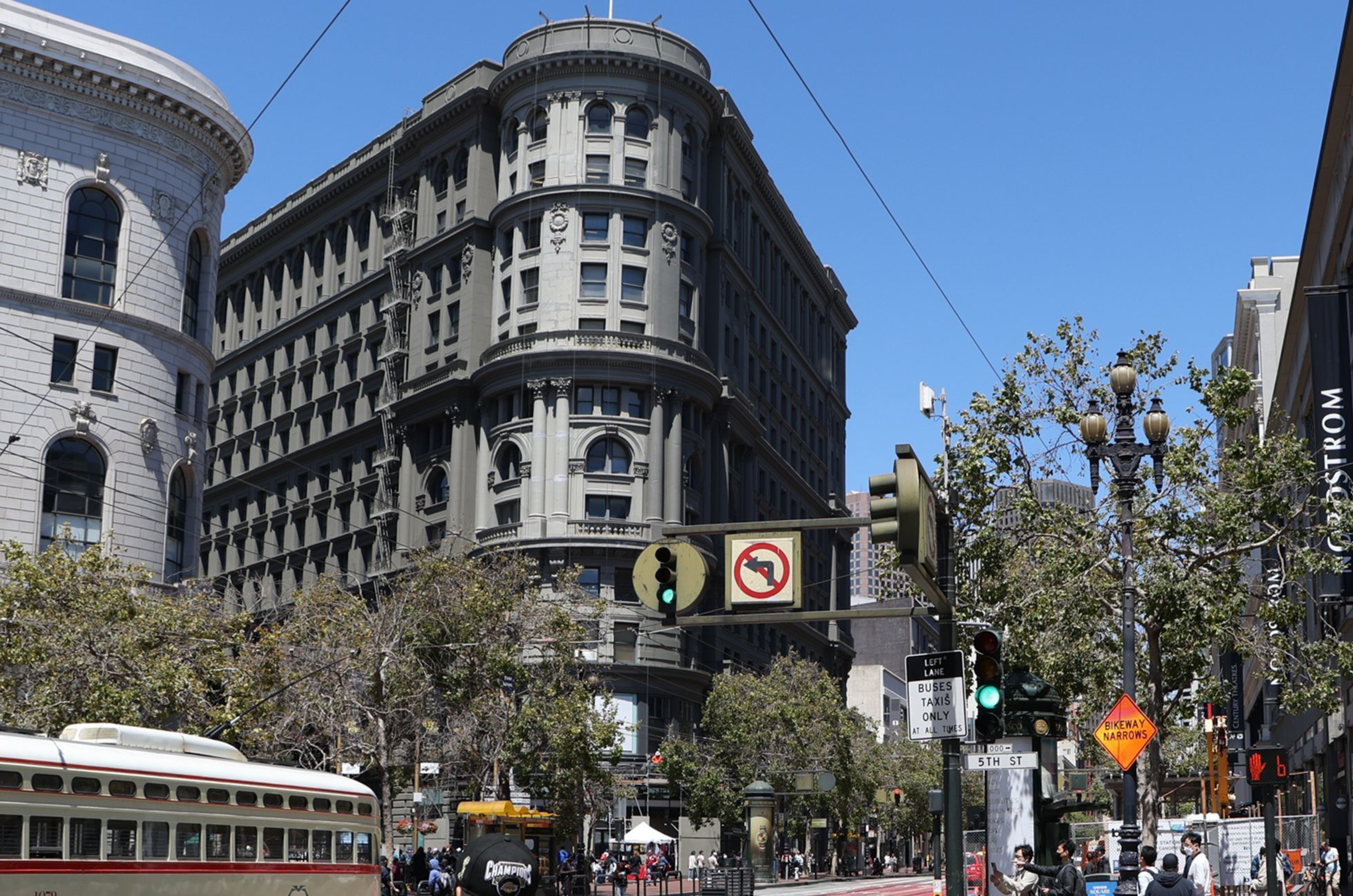Eddie, a cable car gripman, has worked around Powell Street for more than three decades, tracking the Union Square area’s rising and falling fortunes with a steady hand on the lever.
When asked about the vacancies that dot his route, he whistled dramatically: “You’d have to be blind not to notice. This is the worst I’ve seen it, ever.”
Though Eddie, who declined to share his last name, has noticed an uptick in tourists lately, he also sees a street that remains stubbornly, glaringly empty, as “for lease” signs seem to outnumber active storefronts.
On a recent walk up Powell from Market to Sutter Street, The Standard counted 21 empty storefronts out of 45. Real estate firm JLL pegs the corridor’s retail vacancy rate at around 71%, versus 33% for Union Square and 8% citywide.

However, Powell Street’s grim chapter may be coming to a close. Conversations with nearly two dozen building owners, tenants, leasing agents, and other stakeholders reveal momentum on Powell as downtown SF has at last started to shed its ugly reputation. In spite of the lingering vacancies, new investment and an influx of boutiques and major retailers is wiping out old debt and injecting vitality.
Viewing the corridor as the “economic engine” of downtown, city officials plan to invest $22 million into its revitalization (opens in new tab). It sits at the center of Mayor Daniel Lurie’s hospitality zone, which has received additional law enforcement resources and is a focus of the Downtown Development Corporation, the public-private revitalization effort funded by his wealthy allies.
These factors, as well as a spate of building sales, nearly-there lease agreements, and interest from new categories of retailers, mean that Powell could look completely different a year from now.
The hope is that the only direction to go is up.
New blood
In just a few months, real estate heir Ian Jacobs has snapped up three buildings (opens in new tab) along Powell Street through an initiative he has dubbed Project Uris. The Warren Buffett protégé has centered his bargain-hunting commercial real estate strategy on this beleaguered stretch of San Francisco.
His purchases include the green Art Deco building at 200 Powell St., which is set to open the city’s second location of Chinese retail darling Pop Mart in the third quarter.
Jacobs’ team declined to comment, though the purchase of more buildings (opens in new tab) is clearly on the agenda. Real estate experts agree that the turnover is a good thing.

“Properties are being sold, their values are being reset, and now they can be leased at numbers that make sense,” said Colliers broker Julie Taylor, who has worked on the corridor for 30 years. “It was like we were clogged, but now the water is flowing.”
There are many explanations on why vacancies persist. Some buildings, such as 111 Powell St., are owned by foreign investors who have little stake in San Francisco’s overall economy. At others, such as the closed Saks Fifth Avenue and Walgreens locations, the tenants remain on the hook for the rent, meaning landlords continue to be paid while the space sits empty.
Others are winding through the financial and legal process. Boston-based private equity firm Rockpoint defaulted on its mortgage for 114 Powell St. in 2023, and a Swatch store in the building’s corner retail space closed last month. However, an auction for control of the property scheduled for July could mean less debt and less baggage for a new owner.

Already this year, two major retailers have opened on the corridor: Shoe Palace, which took over a shuttered Express location at Powell and Geary in February, in time for the NBA All-Star Game, and Nintendo, with its first retail location on the West Coast.
Zara, which has shuttered two downtown San Francisco locations in recent years, has plans for a flagship at Powell and Post streets.
Pop Mart’s impending opening will likely spur additional interest. It’s a chicken-or-the-egg problem: Brands don’t want to trumpet their arrival before the buzz (and foot traffic) comes back, but splashy announcements will help drive the turnaround.
“The energy is palpable right now — it’s markedly different,” said Marisa Rodriguez, head of the Union Square Alliance. “People are taking risks, because they know Powell Street is coming back.”
Generation gap
Powell Street is the nexus of dozens of intersecting ownership groups, businesses, and complex LLCs. Some of the longest-standing stakeholders are battling to preserve the street’s legacy while trying to navigate its new era.
In early 2020, Karin Flood took over as the fifth-generation owner of the 121-year-old Flood Building. Since then, there has been lackluster interest as she’s tried to fill the 45,000-square-foot corner retail space that Gap exited in 2020 and a smaller one that T-Mobile exited in 2019.
In 2022, she collaborated on a plan (opens in new tab) to fill Powell’s empty storefronts with outposts of local museums and attractions. But that initiative withered due to costs and permitting hurdles. In 2023, a women’s clothing brand was set to lease the Gap space — until a nearby shooting (opens in new tab) and Nordstrom’s plans to shutter its San Francisco Centre outpost led execs to pull the plug, according to a source with knowledge of the deal.
Flood hopes risk-averse retailers are taking stock of recent openings and impending ones, like Pop Mart and Zara.

“No one wants to be the first to return to the street, but the corners are starting to fill in,” she said. “We’re an anchor, so if we can get something exciting happening at the Flood Building, that will hopefully spark more revitalization on the street.”
Across the street, Jon Handlery can thank his father and grandfather for scooping up several buildings as far back as 1948 on Powell and Geary, including the eight-story, curved structure at the corner near his family’s eponymous hotel. Several of his storefronts on Powell and Geary are boarded up and painted with animal murals.
“With all due respect, I’m not going to put a T-shirt shop in,” Handlery said. “It doesn’t benefit the square or its image.”
Taylor describes Powell as a corridor in “transition.” While its next chapter is still unfolding, she and other insiders predict that it will succeed by embracing trends, like the rise of Asian retailers and TikTok-worthy experiences (opens in new tab) and providing brands not found at a suburban mall.
That experimentation is happening on a short-term basis through the city’s Vacant to Vibrant program, which subsidizes rent for local businesses, and has plans for several new storefronts later this year. A pop-up of the Mission boutique Nooworks, known for its vibrant patterned fashions, opened in May at 242 Powell St.
Evan Keizer, an executive at the company that owns the majority of that building, says that although the rent is a fraction of what it would have been 10 years ago, it’s worth it to contribute to downtown’s resurgence.
Nooworks founder Jen D’Angelo said Powell Street’s success will depend on an injection of local color in what has been a bleak scene, and more landlords should present opportunities to small businesses like hers. Otherwise, she said, they are “just shooting themselves in the foot, letting spaces sit empty.”
